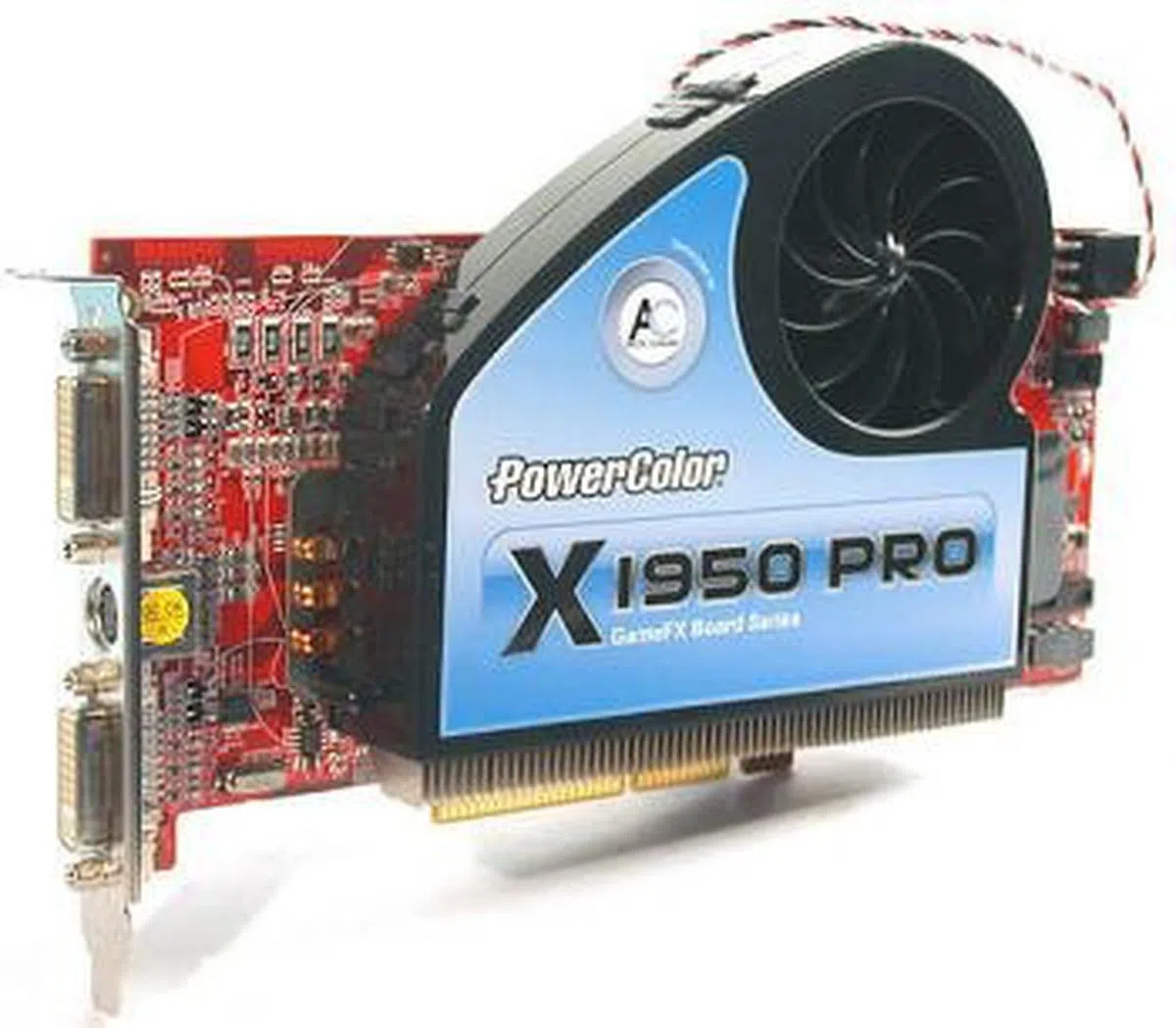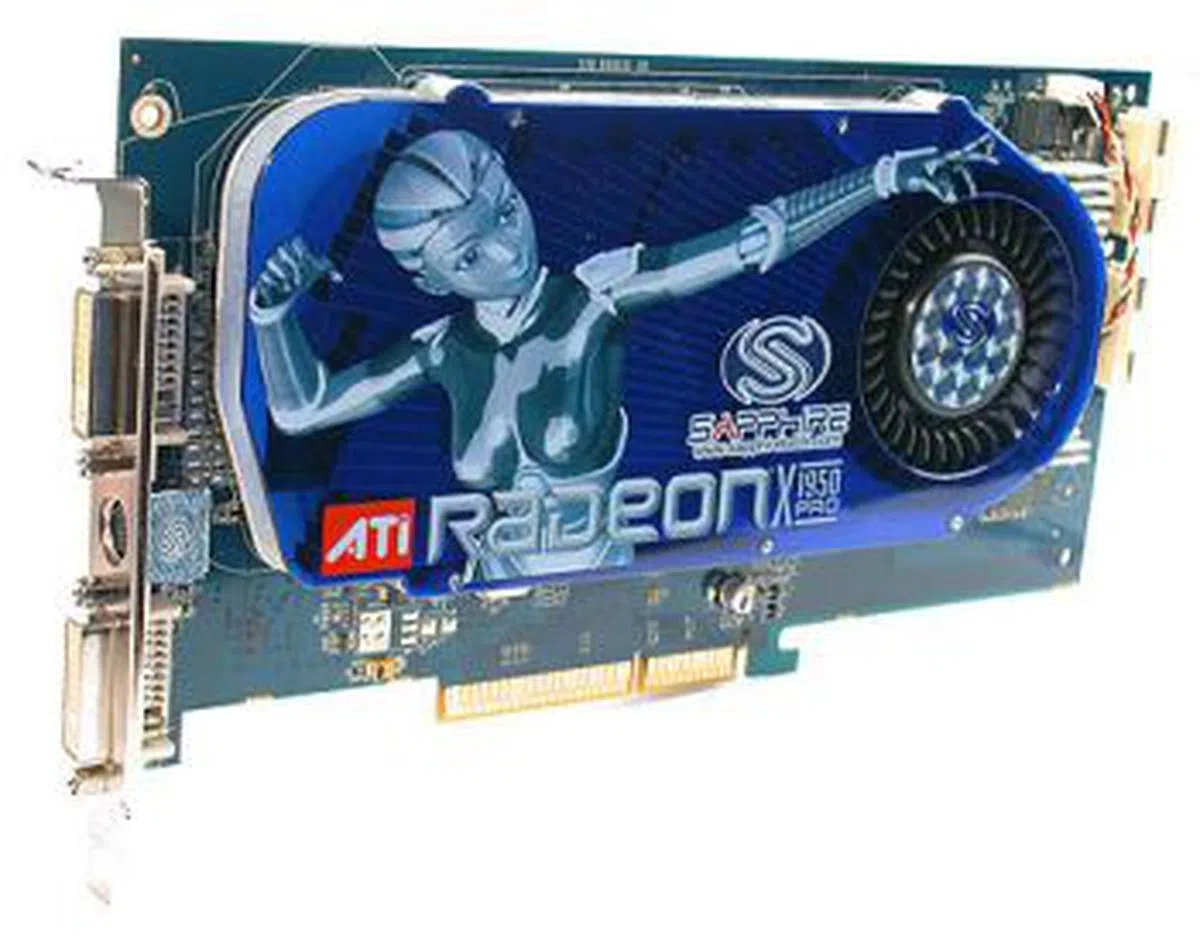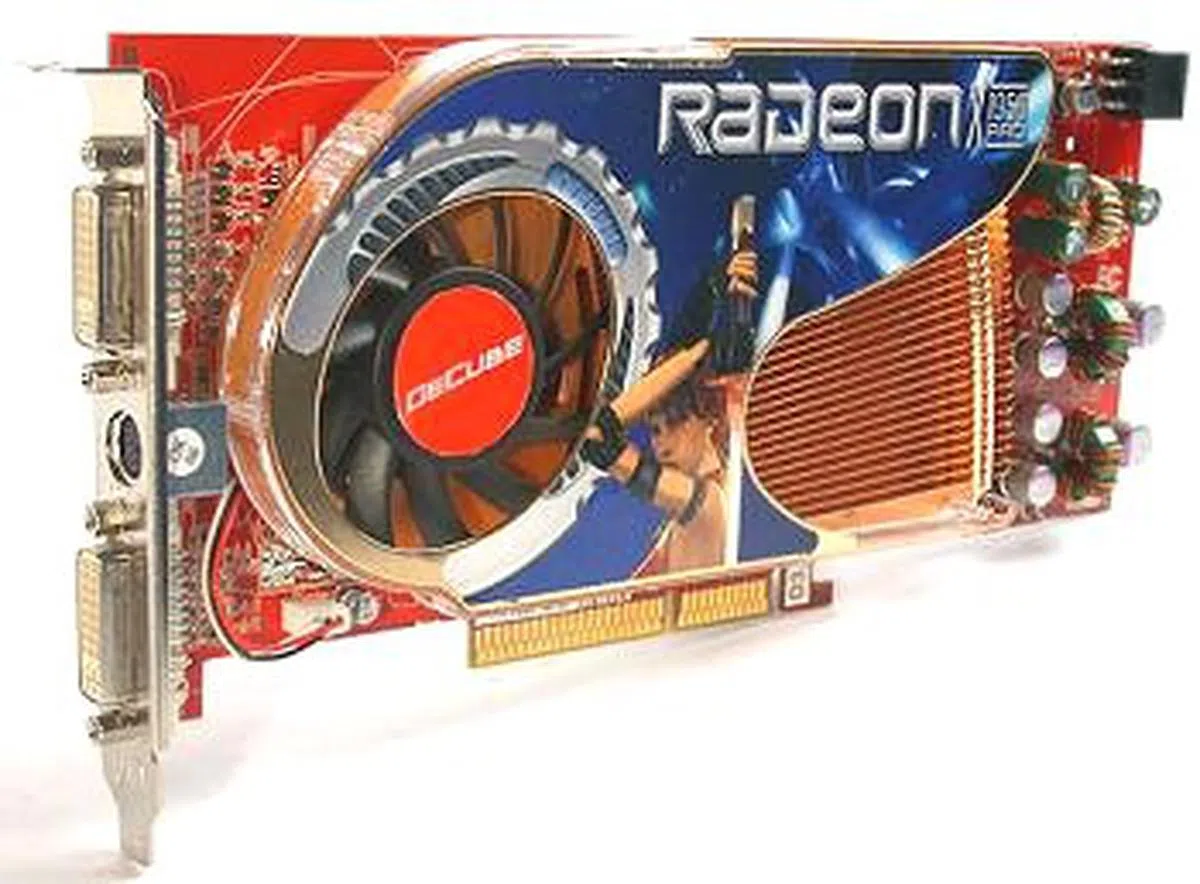ATI Radeon X1950 PRO Shootout (AGP)
If you're one of those who still possess a decent AGP system, be glad. For the chance to boost your system graphics at a relatively affordable price is now here with the AGP version of the high-end Radeon X1950 PRO. We gathered a few of the most readily available models and find out what makes them tick.
Introduction
It's been said that three months on the Internet is equal to a normal human year but the pace is decidedly more 'pedestrian' when it comes to the widespread adoption of new technologies. Computer engineers and scientists may move at a pace set by Moore's Law but there is no guarantee that end-users feel the same urge. In the two years since PCI Express first made its debut as the much-touted successor to the AGP interface, a significant population of users continues to hang on to older AGP based systems.
AGP is Still Sticking Around?
Part of the reason why AGP systems are still abundant lies in the lack of urgency to mass-upgrade for those who have already invested in very decent AGP systems. While another relatively lesser-discussed reason lies in the fact that newer CPUs haven't really improved gaming performance significantly since the late days of AGP's heyday. Remember that we've mostly progressed into multi-core processors these days? Well, if you've been keeping tabs on our reviews, you would realize that dual-core and quad-core processors offer little gaming advantage so far. That brings us to the graphics card quotient that really makes or breaks a game's playability (as long as the system is decked with at least a decent amount of main memory).
Also during this period of transition, you have probably often read about the premature demise of the AGP interface, including our own (mistaken) predictions about its longevity. Yet both ATI and NVIDIA have eventually relented and produced bridge chips (Rialto and High Speed Interconnect respectively) to enable AGP support on their native PCI Express architectures. The aforementioned reasons combined with strong industry demand to support the AGP platform were key reasons why despite the fact that consumer graphics continues to progress in the PCIe scene, there have been the occasional AGP versions appearing now and then to cater to the holdouts. These have usually been of the mid and lower range, like NVIDIA's GeForce 7600 series and 7800 GS while ATI had their Radeon X1300 and X1600 variants on AGP.
The Fastest AGP Graphics Card Yet
ATI's relatively new and upper mid-range Radeon X1950 PRO is the latest to get this treatment and not just from the odd vendor. We have counted at least four manufacturers getting into the act, from those running standard clocks to a 512MB enhanced card. While there is an official ATI reference board for AGP, most of the cards seem to feature the vendors' custom designs and tweaks, making for an interesting comparison. What's also of interest to AGP owners is that the Radeon X1950 PRO has been 'ported' to the AGP interface with its full feature set almost intact, meaning the 80nm core, HDCP support and dual-link DVI outputs are all present. Only CrossFire support has been disabled since that would be superfluous for an AGP motherboard. If you are unsure of the features on the Radeon X1950 PRO, we recommend that you refresh yourself with one of our many Radeon X1950 PRO articles before continuing.
GeCube, HIS, PowerColor and Sapphire have all sent their Radeon X1950 PRO AGP graphics cards for this shootout today, as we dusted off our AGP system for probably one last salvo. Before we introduce the contenders, take a quick glance at the technical specifications for the stock Radeon X1950 PRO AGP card, which is to all intents, exactly the same as the PCI Express version.
The GeCube Radeon X1950 PRO 256MB
Thanks to a large non-reference heatsink made of solid copper, the GeCube Radeon X1950 PRO is easily the heaviest of the bundle. Don't let the slim single slot cooler deceive you for it outweighs the other two-slot cards. Unlike some of the trendy ones nowadays, there are no heat pipes and it relies solely on its copper base and aluminum fins to cool both the core and the memory chips. Unfortunately, the noise emitted was also quite noticeable and if there were a phrase to describe the whole experience, 'old school' would be appropriate.


Those who treasure your expansion slots may find the single slot GeCube perfect.
GeCube has clocked this AGP version of the Radeon X1950 PRO at the standard 575MHz for the core and 1380MHz DDR for the memory, but while the specifications are identical, the board layout looks slightly more cramped than the PCIe version. Then there is also the essential Rialto chip at the back of the card, which makes AGP possible.

The Rialto chip is hidden behind the aluminum backplate.

Not the same layout that we found on the PCIe version. In fact all four Radeon X1950 PRO cards differ from each other in this aspect.

Packed within the brown cardboard box, we found a decent if modest selection of accessories and software. You may be disappointed to find that there are no games included, but given GeCube's relatively more affordable stance, it's fortunate that there's still a standard CyberLink DVD playback application bundled. The accessories too were adequate if not overly generous, though that was consistent with GeCube's usual bundles. Here's what we found:
- 1 x DVI-to-VGA adaptor
- 6-pin Molex power connector
- 9-pin mini-DIN to S-Video/Composite dongle
- 9-pin mini-DIN to Component dongle
- User manual
- Driver CD
- CyberLink Power DVD 6.0
The HIS Radeon X1950 PRO 256MB Turbo Edition
If not for the Rialto chip at the rear, it's difficult to tell that the HIS card is the AGP version. Mostly, that's because HIS has once again trotted out its IceQ 3 cooler for this card, blanketing most of the card under that two-slot plastic and aluminum contraption. There are also heatsinks for other onboard components like the transistors and memory chips, which seems to suggest that this would be a very 'cool' board. It is also very quiet and our standard Intel CPU fan was practically drowning out the almost inaudible whirl of the HIS' fan.

HIS' trademark IceQ series of coolers take the center stage on the packaging.


That small pink square is the Rialto chip. The exact location of it on the back of the PCB seems to vary from manufacturer to manufacturer.
This silence is more commendable given that this HIS Radeon X1950 PRO is a Turbo Edition overclocked to 620MHz (core) and 1480MHz DDR (memory). While we have seen higher overclocks, they are found on PCIe versions so these are possibly the highest default clocks on an AGP version and hence it could very well be the fastest performing AGP card currently. The overclocks are enabled by default when we installed Catalyst 7.1 and we could still adjust them using ATI's Overdrive utility.

In case you haven't seen it before, here's a closer look at the large IceQ 3 cooler.

Take note of its dual-slot requirement.
It may be perfectly fine for HIS to continue using its successful IceQ series of coolers but that does not work as well for the bundle. Dungeon Siege 1.1? That game has been in practically every HIS bundle for two years at least and again it's found in this bundle. The other accessories and the CyberLink DVD Solution suite may be quite useful and decent but we bet users would undoubtedly notice that ancient (in gaming years) game. Sometimes, having no game could be the better option. HIS, it is definitely time to ditch that stale game for something new. An inventory list of the items found with the card is as follows:
- 1 x DVI-to-VGA adaptor
- 9-pin mini-DIN to Composite dongle
- 9-pin mini-DIN to Component dongle
- S-Video extension cable
- User manual
- Driver CD
- CyberLink DVD Solution
- Dungeon Siege 1.1 (full game)
The Sapphire Radeon X1950 PRO 512MB
Finally, we come to the big brother of the bunch, the Radeon X1950 PRO from Sapphire. Big in having twice as much DDR3 memory as the rest and also in the slightly larger PCB. The cooler meanwhile seems to be the reference single slot version and while it was relatively quiet, it lost out slightly to the ones on the HIS and PowerColor.


The board is slightly larger and taller than the others, but that's because of the component positioning choice by Sapphire.

As seen on the rear side of the card, Sapphire's PCB layout and signal routing choices have shifted the location of the Rialto chip higher than its competitors. This in turn shifted the placement of the GPU and memory modules upwards linearly, which resulted in the overall larger PCB.
This Sapphire also comes with an unconventional board design, with two of the older 4-pin Molex power connectors instead of the newer 6-pin version found on all the other Radeon X1950 PRO cards. Those using newer PSUs that come with 6-pin connectors will probably find that rather anarchic though a power cable adapter is provided. The card itself is very mildly overclocked at 580MHz for the core and 1400MHz for the memory, meaning that the 512MB of memory will probably have a greater impact on performance than the small clock boosts. However, considering that this is an AGP graphics card, the bottleneck is more likely to be the processor rather than the graphics, so we are rather wary of recommending this 512MB board for most typical users unless you happen to have a really fast AGP system.

It seems that Sapphire is using the older 4-pin power connectors instead of the 6-pin used on the PCIe version.

Arguably the premium board partner for ATI, Sapphire lives up to its reputation by having the best bundle of all, in terms of both quantity and quality. The only flaw is the plastic packaging, which seems to overspill its contents upon opening. Of course, consumers will probably find a use for the well-stocked bundle, from the new Just Cause game to the usual CyberLink applications. The generous package contained the following items:
- 2 x DVI-to-VGA adaptors
- 4-pin Molex power connector
- 9-pin mini-DIN to Component dongle
- 9-pin mini-DIN to Composite dongle
- S-Video extension cable
- Composite extension cable
- User manual
- Driver CD
- CyberLink Power DVD 6.0
- CyberLink Power Director 4 DE
- Just Cause (full game)
The PowerColor Radeon X1950 PRO 256MB
What's the difference between the PCIe and AGP version of the PowerColor Radeon X1950 PRO? Again, if not for that small Rialto chip on the back, not much. Unlike the cramped board layout on the GeCube for example, there is even some empty PCB space for the PowerColor, reminding us of the PCIe version. The other similarity is of course the choice of Arctic Cooling's Accelero X2 cooler (the Accelero X2 is only found on the PowerColor Radeon X1950 PRO Extreme and not the reference board version known simply as PowerColor Radeon X1950 PRO).


For those who have experienced the silence of the Accelero X2, let's just say that it performed to our expectations. Quiet and cool, Arctic Cooling has produced another blockbuster cooler, that is if you are willing to overlook some minor flaws. Mainly, it concerns the size of the cooler. Besides being a two-slot cooler, the Accelero X2 is also tall, meaning that when installed onto a standard mid tower casing, the side panel will just clear the top of the cooler. No doubt Arctic Cooling had the measurements down to the millimeter so that it could fit into a standard chassis but some users may not like height, especially in a crowded casing. Finally, we have to admit that the cooler is just a little unsightly and awkward looking. But if you're only interested in the performance, then the Accelero on the PowerColor Radeon X1950 PRO is our favorite cooler of the four AGP cards present.

Arctic Cooling provides the Accelero X2 cooler found on this card.

The secret behind the Accelero X2 - heat pipes.

Apart from occupying two expansion slots, users of small chassis might want to take note of its excessive vertical clearance requirement.
Despite the excellent cooler, PowerColor has gone with the standard clocks of 575MHz and 1380MHz DDR. Of course this doesn't prevent consumers from trying their hand at overclocking and for starters, they can use the ATI Overdrive tool in the Catalyst Control Center. The included bundle was also decent with most of the standard accessories and the ever-popular CyberLink DVD Solution though there was nothing really exciting in the package as this is what we have come to expect from PowerColor. The packaged items are listed below:
- 1 x DVI-to-VGA adaptor
- 6-pin Molex power connector
- 9-pin mini-DIN to Component dongle
- 9-pin mini-DIN to Composite dongle
- S-Video extension cable
- Quick installation guide
- Driver CD
- CyberLink DVD Solution
Test Setup
Since only those with a relatively high-end (formerly) AGP system should be thinking about upgrading to a Radeon X1950 PRO, we tried to do the card justice with an Intel Pentium 4 based system. Hence, we used a Pentium 4 3.0GHz processor, paired with the Intel D875PBZ motherboard and 1GB of DDR400 RAM from Corsair. This is in-line with the testbed which we last reviewed a GeForce 7600 GT AGP graphics card. The operating system used was Microsoft's Windows XP Professional with Service Pack 2, updated to DirectX 9.0c.
ATI's latest Catalyst 7.1 driver was used for all the Radeon X1950 PRO cards in this comparison. There were no problems encountered, with the driver correctly recognizing the cards. Meanwhile, the sole NVIDIA GeForce 7600 GT (AGP) that we had tested sometime back was pulled out of storage as a reference and running ForceWare 91.32. We had to make do with this mid-range card since NVIDIA did not have an AGP version of the GeForce 7900 GS, which would have been the appropriate choice. As such the GeForce 7600 GT currently represents NVIDIA's best on the AGP platform. We tested the cards using the following benchmarks:
- Futuremark 3DMark05 (ver. 120)
- Futuremark 3DMark06 (ver. 102)
- Tom Clancy's Splinter Cell: Chaos Theory
- Unreal Tournament 2004
- Chronicles of Riddick: Escape from Butcher Bay
- Quake 4
Results - 3DMark05 Pro & 3DMark06
All thanks to its 512MB frame buffer, the Sapphire was just able to narrowly secure the top position in 3DMark over the HIS Turbo Edition. Every card did quite similarly though, regardless of the clock speeds and the 1 - 2% differences were less than we expected. The predictably wide performance gap between the Radeon X1950 PRO and the GeForce 7600 GT also showed that ATI is now on top of the AGP food chain with the fastest offering yet.



Results - Splinter Cell: CT & Unreal Tournament 2004 (DirectX Benchmarks)
The Sapphire and HIS again proved to be the front-runners in Splinter Cell, with the HIS having the slightest of numerical advantage. A minor gap of up to two frames per second in Splinter Cell and even less than that in Unreal Tournament is hardly the most decisive of differences however and one could argue that it's a result that favors the least expensive card. It was also interesting to find that the GeForce 7600 GT held its own in Unreal Tournament 2004 against the Radeon X1950 PRO.



Results - Chronicles of Riddick & Quake 4 (OpenGL SM2.0+ Benchmarks)
The performance gap between the various Radeon X1950 PRO models were again quite minor and as usual, the HIS and Sapphire were jousting for top spot. This was especially prominent in Quake 4 where we had very similar scores until the more taxing resolutions and settings. Even then, the differences were not of a magnitude where they could be easily spotted by end users.




Temperature Testing
The two-slot coolers proved their worth here, with the PowerColor's Accelero X2 excelling together with HIS' IceQ 3 cooler. With average temperatures comfortably below 50 degrees Celsisus, both the HIS and PowerColor have the edge over the others in terms of both heat and noise output. The GeCube was the most disappointing as despite the copper base, it was both noisy and none too cool. Overall, we were quite surprised at the relatively cool temperatures on all cards, as even the temperatures found on Rialto chip were a significant improvement over older AGP cards from ATI.

Overclocking
In terms of the raw clocks, the GeCube managed the highest with its core running at 655MHz. The upper limit on the memory looked to be quite similar for all the cards at 1500MHz DDR. When it came to the benchmark scores however, the 512MB frame buffer on the Sapphire was enough of a factor for it to take the top spot. Overall, differences between the cards were almost negligible at around 1% and we feel that no card was convincing enough to deserve our Most Overclockable Award. Even if you are running your card at the standard clocks, the 5% or so improvement from overclocking is not much of an endorsement.

Conclusion
Those still clinging on to a decent or (formerly) high-end AGP based system will probably be the ideal target audience for the Radeon X1950 PRO. Unlike lower-end system where the bottleneck is more likely to be the processor or some other component on their platform, those using a speedy Pentium 4 or an Athlon 64 system can easily enjoy the full performance benefits of getting a high-end AGP graphics card. NVIDIA has already released its next generation of graphics with the GeForce 8 series and ATI is set to follow early this year. The focus has shifted to DirectX 10 compliance and with that in mind, we doubt that graphics chipmakers will be keen to release AGP versions of these new cards. Existing AGP systems will not be able to utilize the speed of these new high-end cards anyway so in other words, the Radeon X1950 PRO is as good as it gets now. So how did each of the contenders fare?
With an estimated price between US$230 and US$240, the GeCube Radeon X1950 PRO 256MB is more expensive than the PCIe version. While that is expected considering the niche segment and the additional cost of the Rialto chip and custom board design, the noisy cooler was not. The cooler perhaps did give the GeCube the slightest of advantage in overclocking but its highly audible operation was a compromise not too worth it. The simple bundle and relatively high price are also factors, which counted against it. Simply put, there are better options out there unless a single slot cooler is a must.
HIS Turbo Edition Radeon X1950 PRO 256MB has the highest default overclock in our comparison and that makes it one of the fastest AGP cards around. The IceQ 3 cooler maintains healthy temperatures despite the higher clocks and is admirably quiet. Now if only the cooler could be shrunk into a single slot solution, it would have been perfect. While its price tag at US$249 is on the high side, it is nevertheless a solid if typical design from HIS.
The 512MB Sapphire Radeon X1950 PRO confirmed again that having more memory may not be the best enhancement on a graphics card in terms of cost. The impact on performance was quite minor and easily matched by the overclocked HIS. One would have to run it at higher resolutions than 1600 x 1200 to reap the benefits and in many cases, even a high-end chipset like the Radeon X1950 PRO would struggle to keep up, not to mention the AGP based system that could be in question. The reference single slot cooler does have its merits and is a good compromise between noise, heat and the opportunity cost of an expansion slot. However, the Sapphire is also the most expensive at US$258, though an excellent bundle may blunt that price tag.
Finally, PowerColor has been very price competitive with its ATI products recently and the AGP version of its Radeon X1950 PRO 256MB continues to surprise us. One would think that the Accelero X2 would be featured on an Extreme version of the card but instead, the card was clocked at the standard speeds. That probably made the job easier for this excellent cooler, awkward though it may look. Temperatures were the coolest among the four cards and it was also the epitome of silence. If the two-slot cooler may seem like a deterrent, PowerColor did sweeten the deal by announcing a price of US$209, making it by far the most affordable of the lot. Hence, we did not hesitate to give it the Most Value for Money award, something that we expect most readers to agree. Considering its overall favorable traits, we've also declared the PowerColor Radeon X1950 PRO 256MB AGP graphics card as the Winner of this shootout.
 | |
 | |
 |  |
 |  |
Our articles may contain affiliate links. If you buy through these links, we may earn a small commission.

